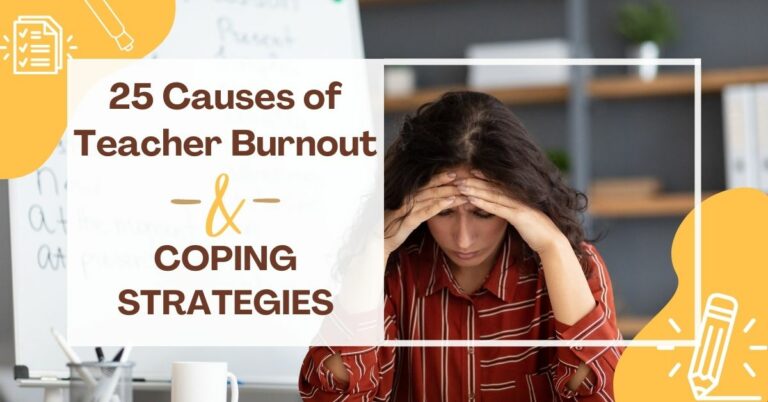Disclosure: This page may contain affiliate links. The Tutor Resource is a participant in the Amazon Services LLC Associates Program as well as other affiliate programs. These are designed to provide a means for us to earn fees by linking to Amazon and affiliated sites at no extra cost to you. Please see our full disclosure for more details.
The Truth About Flipped Classroom Advantages and Disadvantages in Online Education
If you’re wondering about flipped classroom advantages and disadvantages, you’re in the right place!
As online education and e-learning continue to grow in popularity, educators are looking for new and innovative ways to engage students in learning.
Here at The Tutor Resource, we’ve been engaged with flipped classrooms in online teaching since the early 2010s, so we’re well-versed in the pros and cons of this unique teaching option.
The flipped classroom approach is a type of blended learning that’s an effective way to teach students remotely. However, it also has its share of disadvantages.
In this blog post, we will take a look at blended learning and the various advantages and disadvantages of flipped classrooms in an online structure.
What is Blended Learning?
Blended learning is a type of education that combines online and offline learning.
This type of learning can be beneficial for students who want the flexibility of online learning, but also want the opportunity to interact with their classmates and teachers in person.
There are a few different types of blended learning. The most common type of blended learning is the flipped classroom, which we will discuss in more detail below.

Other Types of Blended Learning:
Station Rotation: Students rotate through different stations, both online and offline, throughout the day.
Individual Rotation: Students work on offline activities at their own pace and then come together for whole-group instruction.
Enriched Virtual: Students have the opportunity to attend live, online classes as well as receive offline enrichment activities.
Face-to-Face Driver: Students work offline most of the time, but come together for live, online instruction when needed.

What is a Flipped Classroom?
The flipped classroom model is a type of instruction where students learn content online outside of class, and then come to class ready to apply that knowledge through activities, projects, and discussion.
This approach flipped the traditional model of in-class lectures followed by out-of-class homework assignments.
It also lends itself to online learning by replacing in-person classroom interaction with online communication during learning activities.
The flipped classroom approach has its roots in the work of educational researchers like Jonathan Bergmann and Aaron Sams, who pioneered the use of online videos to deliver content outside of class.
In the last decade, flipped learning has grown in popularity as a way to engage students and promote active learning.

Steps in Implementing a Flipped Classroom
There are a few easy steps in implementing a flipped classroom: individual study, teacher interaction, and then application and review.
To start, students learn the content on their own by watching videos or reading texts. This can be done outside of class or as homework.
Next, the teacher provides guidance and interacts with students to help them apply what they have learned. This can happen in class or online.
Finally, students review the material and reflect on their learning. This can be done through discussions, quizzes, or exams.

Flipped Classroom Advantages and Disadvantages
There are several advantages to using the flipped classroom model. However, there are also some disadvantages of flipped learning of which educators should be aware.
Advantages of a Flipped Classroom Approach
There are a number of advantages to using the flipped classroom model in online education.
First, it allows students to learn at their own pace. If a student struggles with a concept, they can watch the lecture again or look for additional resources online.
Second, flipped classrooms often lead to more engaged and active learning experiences in class. Rather than sitting through a lecture, students are actively working on projects and discussing ideas with their classmates.
Third, flipped classrooms can free up class time for more hands-on activities and collaboration.
Fourth, this approach can be tailored to the individual needs of each student. If a student is struggling with a concept, the instructor can provide additional resources or one-on-one help.
Fifth, parents can see more of what’s going on in a flipped classroom since they can also access the same technology as their kids.
Finally, flipped classrooms can often lead to improved student outcomes. Several studies have shown that flipped classrooms can lead to better grades, improved test scores, and higher retention rates.

Disadvantages of Flipped Classrooms
There are also a few disadvantages to flipped classrooms of which educators should take note.
First, not all students have access to the internet or a computer outside of class. This is one of the limitations to the flipped classroom that can lead to a digital divide between students who have resources at home and those who do not.
Note: For teachers and tutors who work with students entirely online, this “con” is not really an issue as it may be for classroom teachers.
Second, teachers have to trust that students will get their work done. Some students may struggle with self-motivation and discipline when it comes to learning content on their own time.
Third, flipping a classroom requires a lot of planning and preparation from teachers. It can be difficult to create engaging online lectures and activities that meet the needs of all learners.
Fourth, flipped classrooms can be overwhelming for students, especially if they are not used to working independently or taking an active role in their learning.
Fifth, flipped classrooms may make it more difficult for online teachers to provide additional support to students with special learning needs.
Finally, flipped classrooms may not be appropriate for all content areas. Some subjects, like test prep learning, may be better suited to a traditional lecture format.
Despite its challenges, the flipped classroom model is an effective way to engage students in online education. When used correctly, it can lead to more active and engaged learning, improved student outcomes, and increased motivation.

Flipped Classroom Advantages and Disadvantages: General Tips
If you are considering flipping your classroom, be sure to take the time to plan and prepare so that you can set your students up for success. Here are a few tips:
👍 Start small by flipping one lesson or unit at a time.
👍 Make sure all students have access to the internet and necessary materials outside of class.
👍 Provide clear instructions and expectations for assignments.
👍 Create engaging online lectures and activities.
👍 Be flexible and willing to adjust your approach as needed.
Misconceptions About Online Flipped Classrooms
Despite its advantages, there are still several misconceptions about online flipped classrooms. Let’s take a look at five of the most common myths and clarify the reality regarding each one.
Myth 1️⃣
The first misconception is that flipped classrooms only work for math and science. While these subjects may be better suited to this type of instruction, flipped classrooms can be used in any content area.
Fun Fact: Flipped classroom curriculums work well for English language learning as well.
Myth 2️⃣
Another myth is that flipped classrooms are only for students who are struggling. While this approach can be beneficial for struggling students, research has shown that can also be used with all learners.
Myth 3️⃣
A third misconception is that flipped classrooms are only for online education. While flipped classrooms can be used in an online setting, they can also be used in traditional classroom settings.
Myth 4️⃣
A fourth misconception is that flipped classrooms are easy to create. While it does take some time and effort to create flipped classroom content, it is not as difficult as some people think.
Myth 5️⃣
Finally, there is a misconception that flipped classrooms are only for students who are self-motivated and disciplined. While these qualities can be helpful, they are not necessary for success in a flipped classroom.

10 Tips for Writing an Online Lesson for a Flipped Classroom
If you are new to writing flipped classroom content, here are a few tips to get you started:
- Think about what type of content can be delivered online.
- Ensure students have sufficient time to review the materials before the live learning activity takes place.
- Keep lectures short and to the point.
- Make sure all learning objectives are clear.
- Engage students in active learning activities.
- Plan for different levels of learners.
- Create assignments that are meaningful and relevant.
- Don’t flip everything at once.
- Limit learning activities to 15-minute segments.
- Utilize engaging websites, like Genialy and Edupuzzle, to create interactive content.
By following these tips, you can create flipped classroom content that is engaging and effective.
Remember to start small and be flexible as you implement this approach in your class. With some planning and preparation, you can set your students up for success in the flipped classroom model.
Related Reading:
Inspiration vs. Plagiarism: How to Use an Idea Without Stealing
ClassIn vs Zoom: Which is Best for Online Teachers?
Conclusion: Flipped Classroom Advantages and Disadvantages
While there are some challenges associated with flipped classrooms, the flipped learning advantages and disadvantages certainly favor the positive.
When used correctly, flipped classrooms can lead to more engaged and active learning, improved student outcomes, and increased motivation.
If you are considering flipping your classroom, be sure to take the time to plan and prepare so that you can set your students up for success.
With some careful planning and preparation, you can create flipped classroom content that is engaging and effective for your students.
Are you seeking certification for teaching English?
If you are or want to be an online ESL tutor, then certification is required by many companies & desired by many private clients.
👉 We recommend this TEFL course! They even offer post-completion job support and resources.






